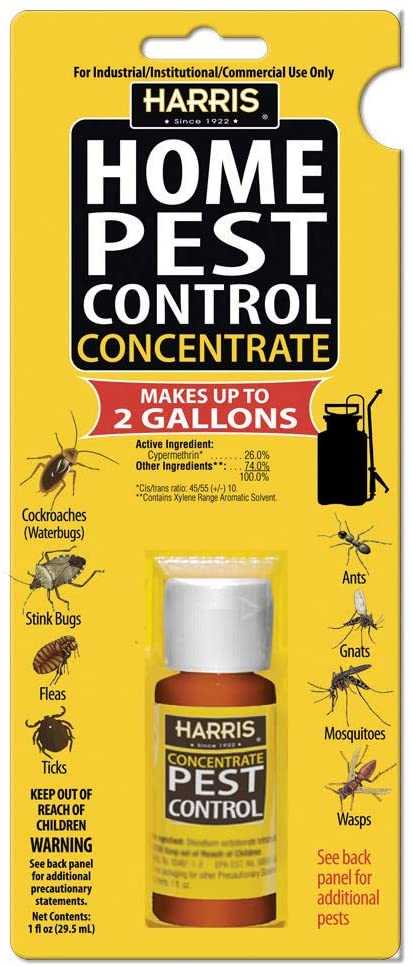Relied On A1 Exterminator Charlotte NC - Comprehensive Pest Solutions
Relied On A1 Exterminator Charlotte NC - Comprehensive Pest Solutions
Blog Article
Bed Bug Treatment Breakdown: Comparing Chemical Vs. Non-Chemical Solutions
In the world of insect control, particularly when handling the persistent problem of bed insects, the selection in between chemical and non-chemical therapy remedies can be a crucial one. Both methods provide unique advantages and downsides, influencing factors such as effectiveness, safety factors to consider, and overall price. By checking out the nuanced details of each technique, a more clear understanding of which path to pursue in dealing with a bed bug infestation can be achieved.
Performance of Chemical Therapies
Chemical therapies for bed pest infestations have actually been commonly acknowledged for their powerful and fast efficacy in getting rid of these bugs. When taking into consideration the efficiency of chemical treatments, it is crucial to comprehend that they can provide a detailed and quick remedy to a bed bug issue.
Furthermore, chemical therapies have the benefit of supplying recurring impacts, meaning that they can remain to remove bed bugs even after the initial application. This recurring activity is especially valuable in combating any kind of possible re-infestations. Additionally, the quick action of chemical treatments can bring relief to people dealing with extreme bed pest invasions, enabling them to reclaim control of their space swiftly.
Security Worry About Chemical Solutions
When using chemical solutions for bed bug treatment is guaranteeing the safety of residents and the atmosphere,One important aspect that calls for cautious consideration. While chemical treatments can be effective in removing bed insects, they may position risks otherwise taken care of properly. Among the key safety worry about chemical services is the potential injury they can create to human health. Exposure to certain chemicals used in bed pest therapies can bring about respiratory system problems, skin inflammation, or other unfavorable responses, especially in people with pre-existing problems or sensitivities. Furthermore, incorrect application or dosage of chemical pesticides can result in hazardous residues sticking around in the cured area, posing lasting health and wellness risks to occupants.
Additionally, the environmental effect of chemical services is another considerable factor to consider. Some pesticides made use of in bed bug therapies may be unsafe to useful insects, wild animals, and communities if they seep right into the soil or water systems. It is vital to make use of chemical treatments sensibly, adhering to safety and security standards, and taking into consideration less toxic choices to mitigate these dangers and ensure the reliable and safe management of bed insect problems.
Advantages of Non-Chemical Approaches
Considering the prospective safety problems and environmental effect associated with chemical remedies for bed insect treatment, checking out non-chemical methods offers a promising option with numerous distinct advantages. Non-chemical treatments are eco friendly, as they do not contribute to air or water air pollution, making them a sustainable selection for insect control.
In addition, non-chemical options can be efficient in targeting bed pests, including hard-to-reach areas where chemical treatments might not penetrate. Approaches such as warm treatment, vacuuming, vapor cleaning, and cushion encasements give thorough removal without making use of dangerous chemicals. Moreover, non-chemical techniques can be less turbulent, needing marginal prep work and permitting quicker reentry right into treated you can look here locations. Overall, selecting non-chemical bed pest treatment techniques not only prioritizes safety and security and environmental management but likewise makes sure efficient and his comment is here comprehensive pest control.
Limitations of Non-Chemical Treatments

In addition, non-chemical treatments often need numerous applications to attain successful removal. This can be taxing and might not always ensure total elimination of all bed insects and their eggs, specifically in hard-to-reach or covert areas.
In addition, the success of non-chemical treatments heavily counts on correct implementation and thoroughness, which can be testing for people without specialist experience. Poor application of non-chemical approaches might result in insufficient eradication, bring about persistent invasions and the requirement for extra therapies.
For that reason, while non-chemical therapies have their benefits, it is important to acknowledge these limitations and consider them when establishing one of the most effective approach for managing bed bug infestations.
Price Contrast: Chemical Vs. Non-Chemical Options
Offered the restrictions linked with non-chemical treatments, a crucial element to evaluate in the context of bed insect administration is the expense contrast in between chemical and non-chemical options. In comparison, non-chemical therapies like heat therapy or vapor can be extra browse around this web-site pricey, with costs varying from $1,000 to $6,000 for an entire home. While the initial expense of chemical treatments may appear reduced, multiple therapies might be needed to completely get rid of the infestation, possibly raising the overall price.
Verdict

Considering the possible safety problems and ecological influence linked with chemical services for bed pest treatment, exploring non-chemical techniques presents an encouraging choice with a number of distinctive advantages.Provided the constraints associated with non-chemical therapies, a crucial element to review in the context of bed pest monitoring is the expense comparison in between chemical and non-chemical alternatives. In comparison, non-chemical treatments like warm treatment or steam can be extra costly, with prices varying from $1,000 to $6,000 for an entire home. While the initial cost of chemical therapies might appear reduced, multiple treatments may be called for to fully eliminate the problem, potentially increasing the overall cost.In conclusion, when contrasting chemical and non-chemical bed pest therapy options, it is necessary to think about efficiency, safety and security, advantages, constraints, and cost.
Report this page